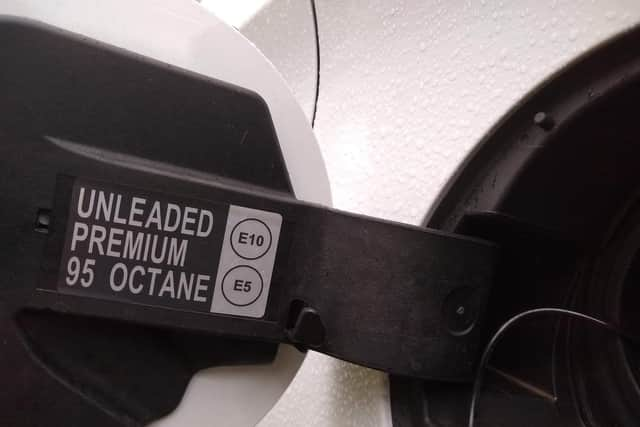What is E10 petrol? Why the UK’s standard unleaded fuel is changing and what it means for drivers
and live on Freeview channel 276
The start of Spetember has marked a major change for millions of drivers around Britain as E10 fuel becomes the main unleaded petrol.
The transition is already underway but over the coming weeks the vast majority of filling stations will change their regular petrol from E5 to E10.
Advertisement
Hide AdAdvertisement
Hide AdThe switch is part of efforts to reduce carbon emissions from road transport and is expected to bring about a reduction in emissions equivalent to removing 350,000 cars from the roads.


However, the Department for Transport estimates as many as 600,000 cars cannot use the new petrol, including some relatively modern models from mainstream brands.
As the roll-out of E10 petrol progresses, here’s everything you need to know, including what is different about it and how it will affect your running costs.
What is E10 petrol and why is it being introduced?
E10 petrol is unleaded petrol which contains up to 10 per cent bioethanol, taken from renewable sources such as sugar beet. Current regular unleaded - labelled as E5 - contains up to five per cent ethanol.


Advertisement
Hide AdAdvertisement
Hide AdThe Government says the introduction of E10 petrol will help reduce transport-related CO2 emissions. Fuels with higher bioethanol content produce less CO2 when burned and the DfT says that switching to E10 as standard will reduce a car’s CO2 emissions by around two per cent.
It estimates that changing to E10 will cut the UK’s CO2 emissions by 750,000 tonnes a year - equivalent to removing 350,000 cars from the road.
Will E10 petrol cost more?
In theory, the introduction of E10 should not increase the price of regular unleaded at the pump as it is fractionally cheaper to produce. However, the DfT says that a car’s average fuel consumption will worsen by around 1.6 per cent as a result of moving from E5 to E10 petrol, meaning drivers will end up paying more to run their car.
Drivers who can’t use the new fuel will also end up paying more. Forecourts which offer two grades of petrol will still sell E5 but it will only be available as the more expensive, higher-octane super unleaded.
Is E10 safe for all cars?
Advertisement
Hide AdAdvertisement
Hide AdE10 petrol can be used in all cars built after 2010 and most cars built since 2000. However, older cars and some models from the last 20 years are not compatible with the new fuel and using it for prolonged periods could cause serious damage. The DfT estimates that around 600,000 cars will not be compatible, including 350,000 in daily use.
Because ethanol is a solvent, increasing its level in petrol can cause degradation of rubber and plastic components, such as hoses, seals, fuel lines and filters. It also absorbs water from the atmosphere, potentially leading to condensation and corrosion in metal fuel tanks, lines and other components.
Classic car insurance brand Hagerty has warned that the change could cause significant damage to the fuel system and engine of older cars, with the RAC advising that the fuel isn’t suitable for any car built before 2002.
The European Automobile Manufacturers' Association (ACEA) has also advised that if you misfuel a car with E10 you should contact your local vehicle dealer, the vehicle manufacturer or roadside assistance provider who may advise that the fuel tank be drained.
You can find out how out how to check if your car will run safely on E10 as well as what to do if it doesn’t here.
